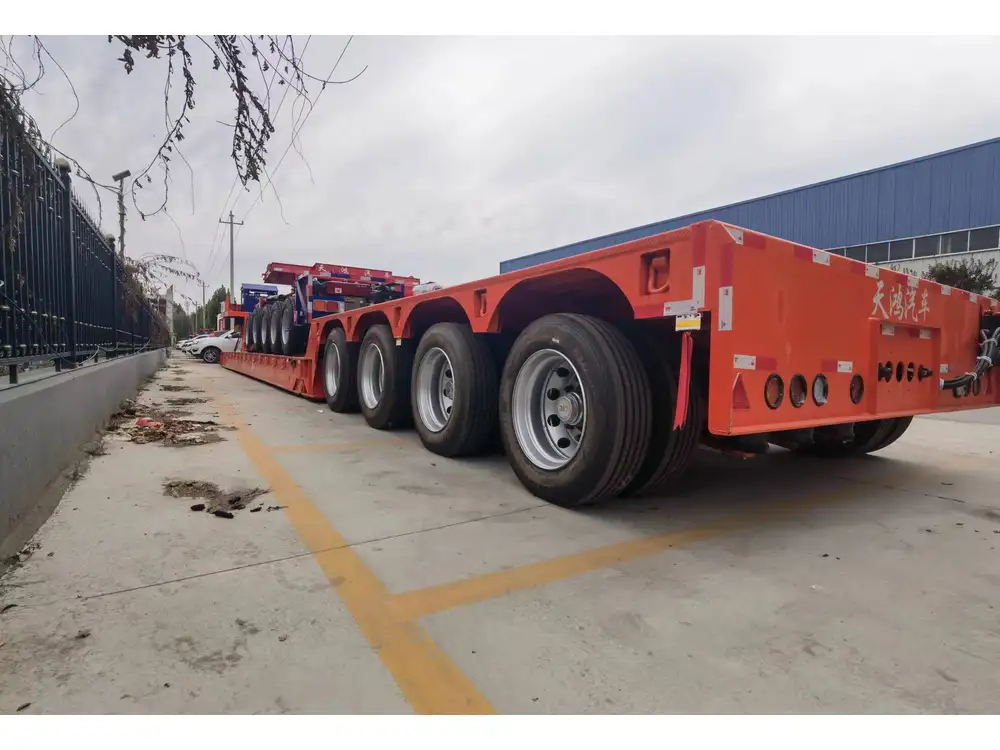In the vast arena of logistics and transportation, understanding the fuel capacity of semi-trucks is crucial for manufacturers, operators, and logistics planners alike. Semi-truck gas tanks are not just vessels for fuel; they are integral to the operational efficiency and economic performance of any trucking business. This article delves deep into the dimensions, styles, and variables influencing semi-truck gas tank sizes, while also addressing practical considerations for industry stakeholders.
Understanding Semi-Truck Fuel Tanks: Types and Capacities
1. Types of Fuel Tanks: An Overview
When it comes to semi-trucks, the fuel tank plays a vital role in determining the truck’s range, weight distribution, and overall functionality. Below are the common types of fuel tanks found in semi-trucks:
| Type | Description | Typical Capacity |
|---|---|---|
| Aluminum Tanks | Lightweight and resistant to corrosion. | 100 to 300 gallons |
| Steel Tanks | Heavier but generally more durable under impact. | 100 to 250 gallons |
| Polyethylene Tanks | Lightweight, less prone to rust, often used in smaller trucks. | 50 to 150 gallons |

2. Standard Capacities of Semi Truck Gas Tanks
While capacity can vary significantly based on truck size and configuration, most semi trucks feature dual fuel tanks to optimize capacity and balance. The standard capacities for semi-trucks generally range as follows:
- Single Tank Systems: Between 100 gallons and 150 gallons.
- Dual Tank Systems: Ranging from 120 gallons to upwards of 300 gallons combined, depending on the truck model.
Why Dual Tanks?
The utilization of dual tanks is a strategic decision. It allows for longer travel distances without frequent stops for refueling, thereby enhancing efficiency.
Example Tank Configurations:
- Typical Configuration: 100 gallons per tank x 2 = 200 gallons total.
- Extended Configuration: 150 gallons per tank x 2 = 300 gallons total.
Factors Influencing Fuel Tank Size

1. Trucking Regulations
Regulatory standards are key players in determining fuel tank sizes. Different regions impose specific restrictions that may affect how large a fuel tank can be. For example, some states have weight limits per axle that could restrict total fuel capacity based on the truck’s design.
2. Intended Use of the Truck
The size of the fuel tank might also correlate directly with the intended use of the truck. Long-haul trucks require larger tanks compared to local delivery trucks. For instance:
- Long-Haul Trucks: Need larger tanks (200-300 gallons) for fewer stops and greater range.
- Regional/Local Delivery Trucks: Generally use smaller tanks (50-150 gallons), focusing on maneuverability over long-distance capability.
3. Payload Considerations
The weight of the cargo considerably impacts the total design of the truck, as heavier payloads require adequate weight distribution. Overly large tanks may lead to regulatory challenges regarding weight limits, particularly if the truck is already carrying a substantial load.

4. Engine Efficiency
Modern semi-trucks come equipped with advanced engines designed to maximize fuel efficiency. A larger fuel tank allows for longer hauls, but efficiency also depends on engine technology. Some trucks can travel more miles per gallon, thereby reducing the need for an excessively large tank.
Comparisons of Fuel Efficiency by Fuel Type
Not only does the size of the gas tank play a role, but also the type of fuel utilized can significantly affect operational efficiency. Below is a comparative analysis of diesel and gasoline requirements in semi-trucks.
| Fuel Type | Average Fuel Tank Capacity | Miles per Gallon | Pros | Cons |
|---|---|---|---|---|
| Diesel | 100-300 gallons | 6-8 | Higher energy content, more efficient | Higher cost per gallon |
| Gasoline | 50-150 gallons | 8-10 | Generally lower cost | Lower energy density |
Real-World Practicalities: Understanding Range and Efficiency

1. Fuel Range Calculations
To understand how big a semi-truck gas tank truly needs to be, we consider the relationship between tank capacity, fuel efficiency, and travel distance.
Example Calculation:
For a truck with a 200-gallon fuel tank and an average fuel efficiency of 7 miles per gallon, the potential range can be calculated as:
This range means drivers can cover long distances before requiring a refuel, significantly impacting operational efficiency.
2. Factors Affecting Actual Range
Range, however, is not just a function of tank capacity. Several variables can come into play:
- Weight of the Load: Carrying heavier loads can reduce miles per gallon (MPG), thereby affecting range.
- Driving Conditions: Highway driving provides better fuel efficiency compared to urban driving due to frequent stops.
- Aerodynamics: The truck’s design impacts fuel consumption; trucks with better aerodynamics typically consume less fuel.
Conclusion: The Right Balance for Your Business
Understanding the dynamics of semi truck gas tanks is fundamental for operators aiming to optimize performance and costs. The capacity necessary depends on multiple factors, including:
- Truck model and purpose
- Regulatory requirements
- Weight distribution and engine efficiency
- Driving range needs
In weighing these factors, trucking companies can make informed decisions on the type and size of fuel tanks that best fit their operational demands. Addressing user intent around the question “how big is a semi truck gas tank?” not only proves insightful for potential purchasers but also aids in making bespoke decisions tailored to specific logistics needs.
To summarize, while the typical size of a semi truck gas tank can vary from 100 to 300 gallons depending on the configuration, the real question revolves around how these capacities align with your business goals, regulatory environment, and operational efficiency. By investing in an optimal fuel tank setup, trucking businesses can elevate their performance metrics, enhance profitability, and ensure a robust bottom line in an increasingly competitive industry.



